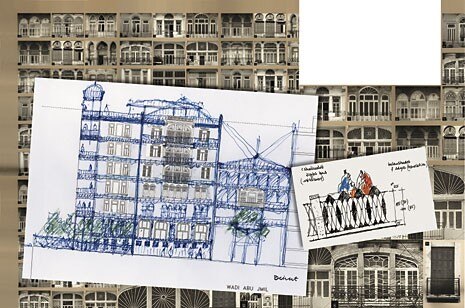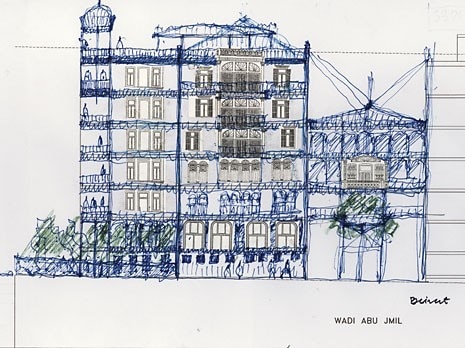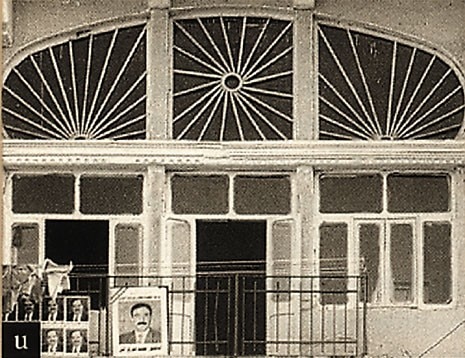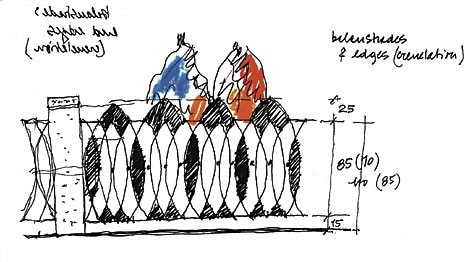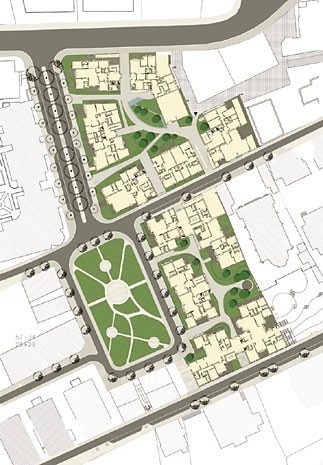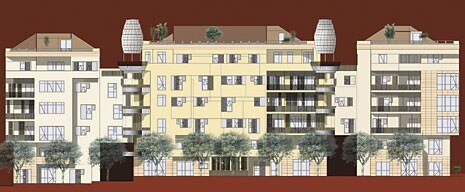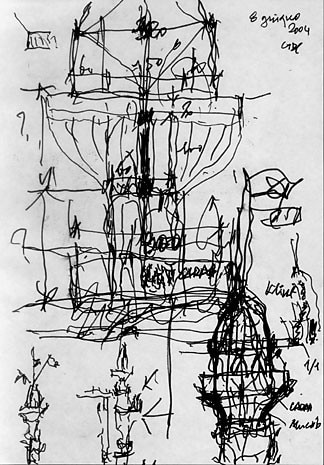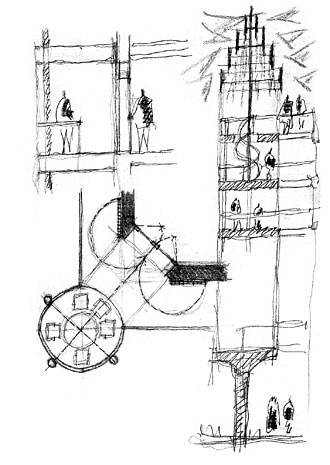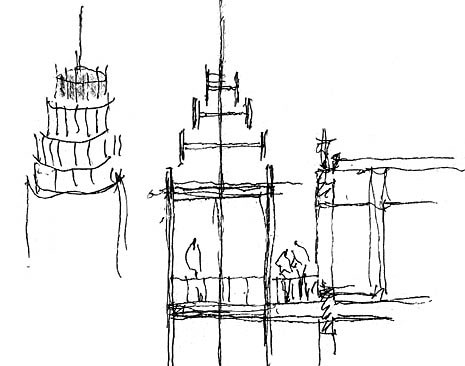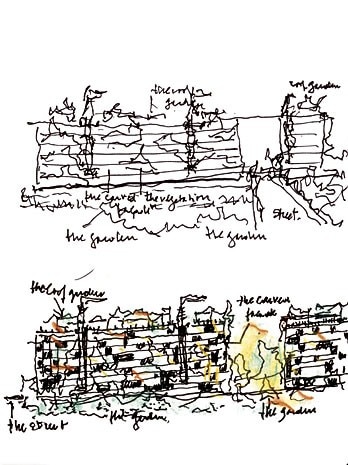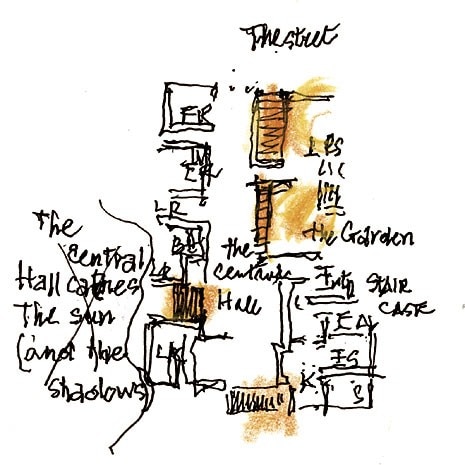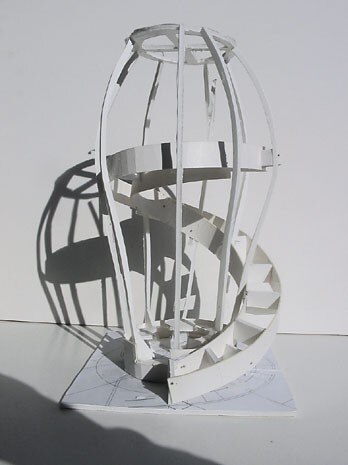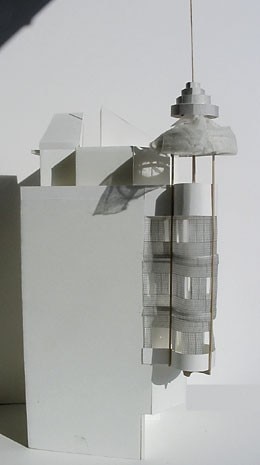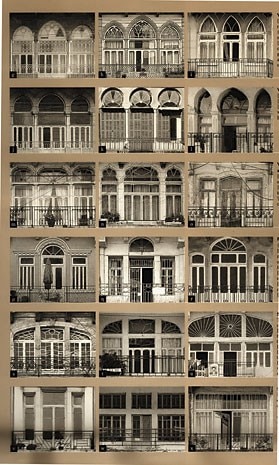Project notes
Monica Mazzolani
The design for the residential buildings proposed in 2003 by the client – Solidere, the Lebanese company for the development and reconstruction of the Beirut Central District – started from the regulations laid down under the programme stipulated with the Beirut city council concerning the character of buildings required to foster a sense of urban centrality. Stylistically, the reference model was clearly that of the middle-class building type imported from Europe during the French mandate – between the Twenties and Forties. In the old residential quarters of the Central District, in response to the medley of styles that characterises the fragments still standing after war damage, the reconstruction is inspired by an eclectic Levantine building type. This denoted a particular sense of urban decoration that was fashionable in the first thirty years of the 20th century. That precise choice was translated into building regulations which the architects had to accept in order to design the new residential blocks in this part of the city. The delicate reconciliation between tradition and innovation underpinned the thinking behind the design of the two blocks situated at the foot of the ancient Seraglio, now the Lebanese Parliament building, and are crossed by rue Waj, which in a few metres leads into Place de l’Étoile, and to the Souks now being rebuilt.
Like all Mediterranean cities, Beirut is a densely stratified metropolitan area, where every population since the Phoenicians has impressed its own layer upon the urban territory. This stratification of the urban fabric is also evident in the social fabric of today’s population, with its mixture of numerous ethnic and religious groups. In their design approach, the architects researched the character to be impressed on the residential pattern of the Central District by surveying the relations between public and private space, the different thresholds of privacy in domestic life, the inner spaces of homes and their views of the external world. In this way a serious reflection was focused on continuations and breaks with tradition within a programme of real renewal. At the end of the war (1975-1990), large urban areas, particularly in the centre, were left heavily damaged. But ten years later the ambitious private reconstruction programme could already boast the completion of a new infrastructure system and the defence of the city’s coastal areas, an advanced process of land reclamation, the restoration and enlargement of the most prestigious archaeological sites, the renovation of some 300 historic buildings and the construction of a considerable number of new buildings. The guiding idea of rebuilding the capital starting from its centre was immediately followed up by the exploitation of public space, promoted in the Central District. Beirut is reborn from its centre, like a cosmopolitan Mediterranean city of ancient civilisation steeped in tradition.
Drawing inspiration from that residential model meant looking to the “central hall” type of interior that had influenced its development, with all the distributive and hierarchical implications in the privacy of spaces which this room-type entailed. In order to make the central room typology clear, new layouts had to be found that would allow them to adapt to the demands of diversified occupants. The way the outside of the central hall characterised the block’s two opposite facades, and the variety of doors, windows and shutters that their tripartition had inspired over time, brought another element into the consideration: that of variation closely related to the theme of identity. From the outset, the aim was to create apartments all of different shapes and sizes, in the layouts of their living rooms, balconies and external doors and windows.
It is the central hall – of uncertain derivation, probably imported from Turkey or Venice – that proved to be the key to these transformations. It also brought the question of habitation back to its rural origins, in a link with the residential model of an early 20th-century cosmopolitan well-to-do class, and setting a principle for the generation of space that would save the volumes from the logic of the apartment block. The central hall, as the most public part of the home’s private space, allowed overcoming the traditional distribution of boxrooms, free spaces, and night and day zones, to the benefit of a logic which, by eliminating the box and spare rooms, could create attractions and synergies in a new interior arrangement more similar to that generated among urban spaces. Bearing in mind that the apartments vary between 200 and 400 m2, units of different scales were identified. These would adapt to family life and domestic servants in the exclusive interests of owners. Criteria were established to govern the reciprocal relations as well as those with the central hall, also regarding the possibility of facing and engaging with the exterior. This led to 60 different patterns for 80 apartments, with living rooms all different and enriched by finishing details and a great variety of internal frames. The architecture of Beirut is very rich in elegant ways of expressing its urban character, in its relations between solids and voids, in the quality of materials, in the wealth of elements that make up its facades: bow windows, loggias, terraces and parapets, cornices, handrails, copings and fenestrations. Many significant buildings were analysed, and some of their architectural elements were sampled, interpreted and fitted with the requisites necessary to make them feasible. They were then integrated with many of the finishes that were designed as the modelling of the block – from the outside – and the study of the apartments – from the inside – proceeded. This many-sided language influenced the design process before appearing on the outer and inner facades of the buildings. It is proposed as an alternative to be explored in greater depth before recomposing the fragments of an urban scene that had for many years remained at a standstill, retraceable more in accounts and attitudes than in physical space.
